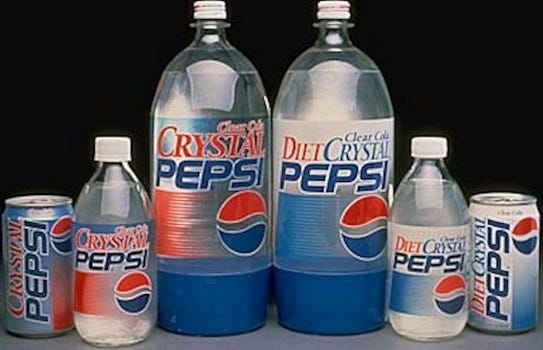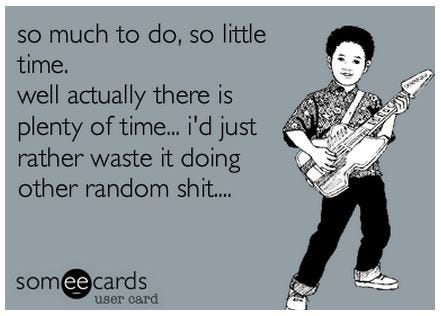Did you seriously just say: ‘We don’t have time to talk to our users’?
Because we sure have plenty of time to argue about perceived customer needs in meetings five times a week
OK then. If you really don’t have time…stop it.
Stop saying you are customer focused.
Or that your company is practicing customer-centricity. (Is centricity even a real word?)
Or saying you are implementing whatever other new Transformative—Actionable—Paradigm-Hacking—Face-Palming Initiative you are strategizing.
Instead, you should be proudly shouting from the rooftop:
We are product focused!
And that your company is practicing world class stakeholder-centricity.
Then take a deep breath and be super-brave and super-honest…. and say you don’t actually care about the end user right now because they don’t really know what they want anyway. Right?

And since we’re all in the circle of trust now…you’re actually focused on getting this project out of your hands as quickly as possible so if it becomes an epic failure and wastes a ton of money it can’t be blamed on you.
We’ve been told over and over: Silly product maker…users don’t know what they want. (Images of Steve Jobs or Henry Ford dancing in your head yet?)
In reality, users do know what they want.
Although…they can have a difficult time articulating what they want in a way that translates into viable solutions. But you still NEED to talk to your users. And talk to as many of them as you can.
Here’s a little secret I’ll share that all user researchers already know:
If you talk to your users and ask the right questions, you’ll figure out exactly what they want. And more importantly…what they need.
It’s time to stop perpetuating the notion that you shouldn’t talk to your users.
Not doing any user research or testing on your product or service is the best way to guarantee it will fail.
So now what?
You don’t want your product to end up on a list of the worst product fails of all time right?
Then here is what you need to:
Interview and observe the people that will use your product or service.
You can send out a million surveys and dig into analytic data to get great info…no doubt. (I do it too) But surveys and analytic data points can’t ask follow up questions that help uncover the real insights you need in order to make your “Game Changing” decisions.
Honestly…you’ll be amazed at what you will uncover when you talk to the people that you are serving. A few minutes over the phone or (even better) face to face will help you uncover what it will take to create a successful product.
And then…
Segment users by common elements, themes and/or characteristics that are relevant to the solution you are creating.
Group them in a way that makes the most sense and gives you the best understanding of your user types. In my opinion, this is the foundation of trying to create something your users will want.
Here’s an example:
Making a website where people can buy things? Maybe your groups are-
- Consumers — People that are buying something for their own use
- Gift Givers — People that are buying things for someone else
- Re-sellers — People that have a business and need stock to sell
Bonus tip: Once you have a good understanding of the segments, take the time to turn these segments into Personas. Utilizing realistic portrayals of your user types is one of the best tools to use when trying to get stakeholders become more empathetic towards the user and their needs.
After you’ve done that…
Prioritize your segments and their individual needs, wants and pain points.
I’m so excited for you to get to this part!
Once you start doing this, then your products’ key differentiators will start to come in to focus. And if you get creative about how you prioritize all this awesome info, you can create a product development road-map too!
And of course…
Have conversations with the people that use your product or service throughout the entire project life-cycle.
This is where a lot of companies drop off and get back into the cycle of thinking they know better than their users. What these companies don’t truly comprehend is that the innovation within the competition is happening so fast, if you’re not having conversations with your customers you’ll be left behind.
If you take the opportunity to check in on a regular basis, you’ll be able to measure and improve user experience and satisfaction and stay ahead of the competition.
I know… it seems like a lot of work. But this assumption is why many companies don’t do it, leading them to say:
it’ll take a long time to do this…
and it’ll be really expensive…
and we don’t have the right talent to do this…
and…and…and
— AHHHHHHHH! STOP IT!—

Here’s the thing…there IS time to do it. All of it. And if you reflect back on all the projects you have been associated with in the past you know this. I’m sure you can clearly remember those unproductive meetings where you blacked out for a bit, woke up, looked around and realized it totally didn’t matter that 10 minutes of you time happened during the meeting. If we instead used the time to talk to our users, our meetings would be WAY more productive…and some meetings would even be totally unnecessary (Yes, please).
And by the way…
you can’t use the excuse that it’s too expensive to talk to your users anymore. Besides that crazy new invention called a phone, there are countless FREE services you can use to actually observe how people interact with your product or service. (Google Hangouts, Join.me, gotomeeting are a few I use all the time)
The talent argument. This one kills me. Yes, it is beneficial to have someone with experience doing user research and conducting validation sessions. But, it doesn’t take an expert to have a productive conversation with someone. It does however take a little preparation and practice. (Check out Interviewing Users by Steve Portigal to get some great pointers) Besides, how are you going to justify hiring a researcher or usability expert if you can’t prove talking with customers helps make a difference?
Here’s one last tip:
Involve your stakeholders in the research process to help them understand the value.
Make the time.
Good luck.
About Handrail
We built Handrail to help teams collaborate throughout the entire user research process. Plan, collect, analyze, store, and share your research all in one location. Sign up for a free 30-day trial today.

Mat Winegarden
Product manager at Handrail. Sometimes I have ideas...other times I am brilliantly late to the party.